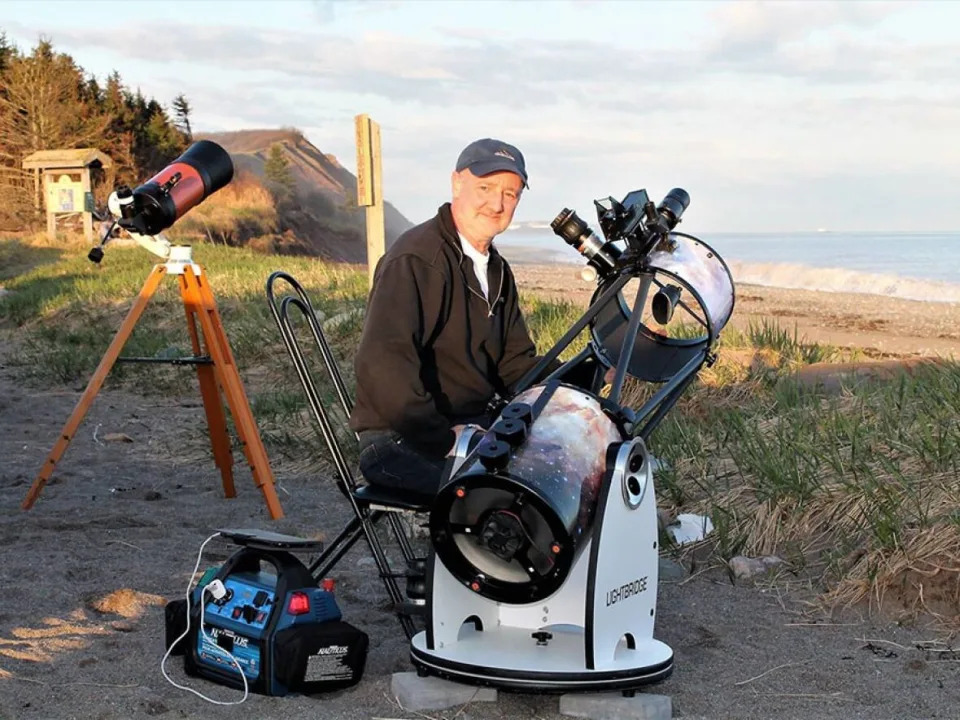CBC
Sun, April 9, 2023

Amateur astronomer Chris Curwin said it's hard to say what the fireball was, but that it's quite rare to see these in the sky in broad daylight. (Paul Owen - image credit)
Social media lit up Saturday afternoon when dozens of New Brunswickers say they saw a fireball or shiny object falling out of the sky.
Some claimed on Facebook that they saw a fast-moving ball of fire with a tail, or silver object and others saying they heard or felt a loud boom.
It was spotted in Upper Kingsclear, McAdam, Stanley, Fredericton and even in the Saint John area.
Reports of eyewitnesses have come as far south as Washington County in Maine, according to the Machias Valley News Observer.
Shawn Hamilton of Lincoln, N.B., says he saw it while out on his tractor at 1 p.m. Saturday. He said it came from the direction of the Rusagonis area.
"What I saw was a metallic reflection," said Hamilton. "It had a tail on it, which was also metallic and white. It was amazing to see. It was large for sure."
Hamilton said the object moved quickly and was visible for a few seconds.
He said minutes later he heard a loud boom.
Chris Curwin, an amateur astronomer in Saint John, said it's hard to know what happened.
"There's a hundred tonnes of space stuff that falls out of the sky every day… thousands of fireballs every day," he said.
Curwin said it is rare to actually see this debris fall out of the sky because most of it falls into the ocean or unpopulated areas.
He said it's even more rare to catch a glimpse in broad daylight.
"It's something that would be fairly bright, so a fireball is usually something that's brighter than the planet Venus," said Curwin.
Curwin said the fireball could have been a piece of space debris, like a rock or part from a derelict spacecraft or satellite, or a meteor.
He said a loud sound would be possible depending how large the object was and whether it exploded.
"It's really not an exact science," he said.
He said these fireballs will travel about eight kilometres per second when they impact the atmosphere.
Curwin said one possible explanation is a defunct Starlink satellite, referred to as Capella-4 (Whitney), which had a predicted re-entry time of 11:49 a.m. AT on Saturday.
No comments:
Post a Comment